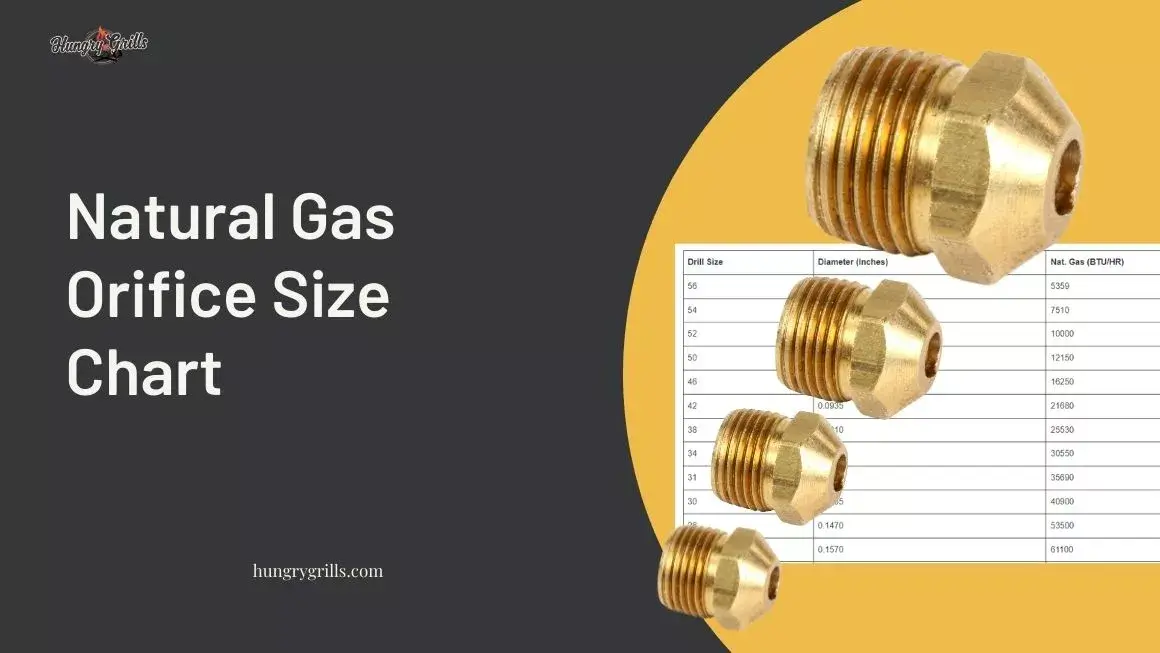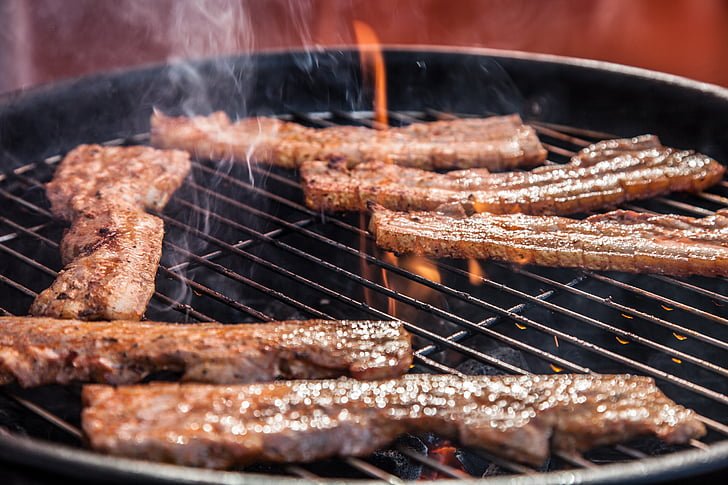Natural Gas Orifice Size Chart
There’s no doubt that orifice size matters a lot in natural gas cause it gives you more control over water flow. That’s why choosing the right size of the orifice is so important.
However, the wide range of orifice sizes may confuse you a lot. But to clear out all your confusion regarding orifice size, we’ve discussed the Natural Gas Orifice Size Chart in this article.
So without further ado, let’s get started.
What is Orifice?
In gas grill applications, the orifice controls the flow of gas, which can be either natural gas or LP gas (propane), depending on the application.
The spud orifice is a male fitting that’ll screw into the valve, while the hood orifice is a female fitting that will screw into the male valve end of the valve. A gas grill can’t be used without the presence of an aperture.
What Does Orifice Size Mean?
The operating pressure of your machine is determined by the size of the aperture of the nozzle. As a general rule, the smaller the orifice, the greater the water flow restriction through the machine.
Choosing a nozzle with an aperture that is too tiny may restrict water flow and may cause the machine to work harder than it’s designed to.
Functions of Orifice
The size of the orifice hole dictates the BTU (British Thermal Unit) rating of the grill as well as the kind of gas it uses. Your grill burner’s BTU rating will decide how much heat it produces. Unlike liquids and solids, gaseous substances can’t be mixed.
This means that natural gas orifices will have a bigger opening, whereas propane orifices will be narrower since propane is a higher-pressure gas than natural gas. Neither of them can be used in the same way. You should never utilize an aperture drilled for Natural Gas on Propane or Propane on Natural Gas.
Using a Natural Gas orifice on a Propane grill can result in an unnaturally high flame, which is exceedingly hazardous.
Now that you’ve known the functionality of an orifice let’s understand the benefits of orifice meters in natural gas.
Natural Gas Orifice Size Chart
Here’s a size chart of natural gas orifice you need to know about:
| Drill Size | Diameter (Inches) | Nat. Gas (BTU/HR) |
| 56 | 0.0465 | 5359 |
| 54 | 0.0550 | 7510 |
| 52 | 0.0635 | 10000 |
| 50 | 0.0700 | 12150 |
| 46 | 0.0810 | 16250 |
| 42 | 0.0935 | 21680 |
| 38 | 0.1010 | 25530 |
| 34 | 0.1110 | 30550 |
| 31 | 0.1200 | 35690 |
| 30 | 0.1285 | 40900 |
| 26 | 0.1470 | 53500 |
| 22 | 0.1570 | 61100 |
| 18 | 0.1695 | 71200 |
| 16 | 0.1770 | 77700 |
| 12 | 0.1890 | 88600 |
| 6 | 0.2040 | 103200 |
| 2 | 0.2210 | 121100 |
| A | 0.2340 | 135700 |
| E (1/4) | 0.2500 | 154900 |
Importance of Using Orifice Meters in Natural Gas
The main purpose of using an orifice meter in natural gas is to measure the volumetric flow of the natural gas. But that’s not all we’ve listed the most common advantages below:
- Orifice meter provides accurate measurements of flow rate.
- These meters have the advantage of being simple and low-maintenance, making them a good investment. To achieve the needs of the design, they use easily accessible devices to measure differential pressures.
The American Gas Association (AGA), the American Petroleum Institute (API), and the International Organization for Standardization (ISO) have created standards for sizing orifices (ISO).
- Orifice plate meters are used in a wide variety of environments and flow ranges, typically under difficult circumstances. Changeable orifice plates allow the meter to be operated throughout vast flow ranges for extended periods of time, whether a flow is significantly reduced or surges to surpass the meter’s maximum flow rate standard.
- Incorporating digital, networking, and industrial internet of things (IIoT) technologies into orifice meters allows them to better match current measuring needs and problems.
- Flow data supplied by orifice meters may now be acted upon and shared across other domains thanks to their integration with plants.
In spite of the orifice meter’s simplicity, it may contain one of the most extensive, easy-to-understand diagnostic suites of any flowmeter.
Do You Need a Natural Gas Orifice for Your Application?
An orifice is required for the operation of a gas grill. The size of the orifice hole dictates the BTU rating of the grill as well as the kind of gas it uses.
Due to the lower pressure of natural gas, the orifices will be bigger, while propane is a compressed gas, and hence the orifices will be smaller. There’s no interchangeability between the two.
FAQs
- What is the best way to determine the size of my orifice?
In order to find out how big the orifice is in square feet, you must divide the flow of the liquid by the velocity of the liquid. If you look at the previous example, you will divide 8 by 2. The orifice would have a total surface area of 4 square feet.
- What is the function of a natural gas orifice?
The gas orifice is a tiny, very precise hole that pours fuel into the combustion or burner tube via the combustion or burner tube. A clogged or unclean aperture that supplies the fuel will prevent the fuel from being delivered to the appliance in time to enable adequate combustion to occur.
- What is the minimum orifice size required for natural gas?
The size of natural gas pilot orifices normally ranges from around 0.014 to 0.026 inches (inches diameter). For example, 0.026′′ for a commercial cooking appliance pilot (1,835 Btu/hr at 4′′ pressure) and 0.018′′ for a natural gas water heater pilot (879 Btu/hr at 4′′ pressure) are both acceptable values.
- Why is it necessary to have a larger orifice for natural gas than for propane?
Natural gas orifices are bigger in diameter than propane orifices, owing to the higher gas service pressure. Because of the lower pressure gas and the narrower orifice, using a propane device with natural gas would most likely result in a tiny flame or even no burner flame due to the lower pressure gas.
Conclusion
It seems that orifice sizes can be used for a wide variety of applications. Choose a size that gives you complete control over your work.
Hopefully, this Natural Gas Orifice Size Chart will help you in your journey! With the help of the accompanying chart, you’ll learn how the right size selection may make your life easier and improve your job experience.
Are you really enjoying different types of dishes and love to make tours several times? Grilling something is the core of enjoyment if you make fun with friends & family.
However Hungry Grills is most trustable yet in shares knowledge about Grills and its related chop chop job & making loyal reviewed to readers.
-Mitchel Shawn







